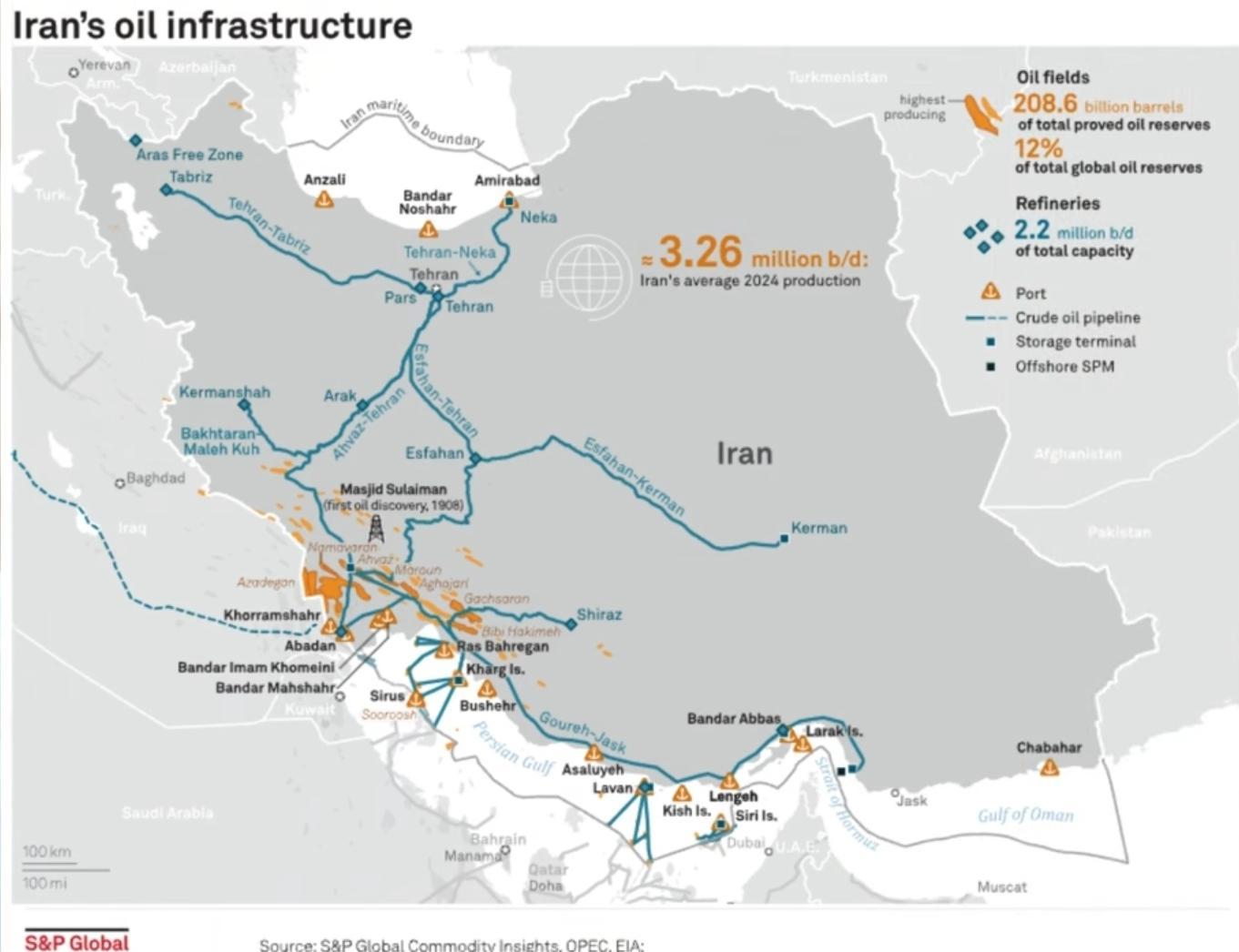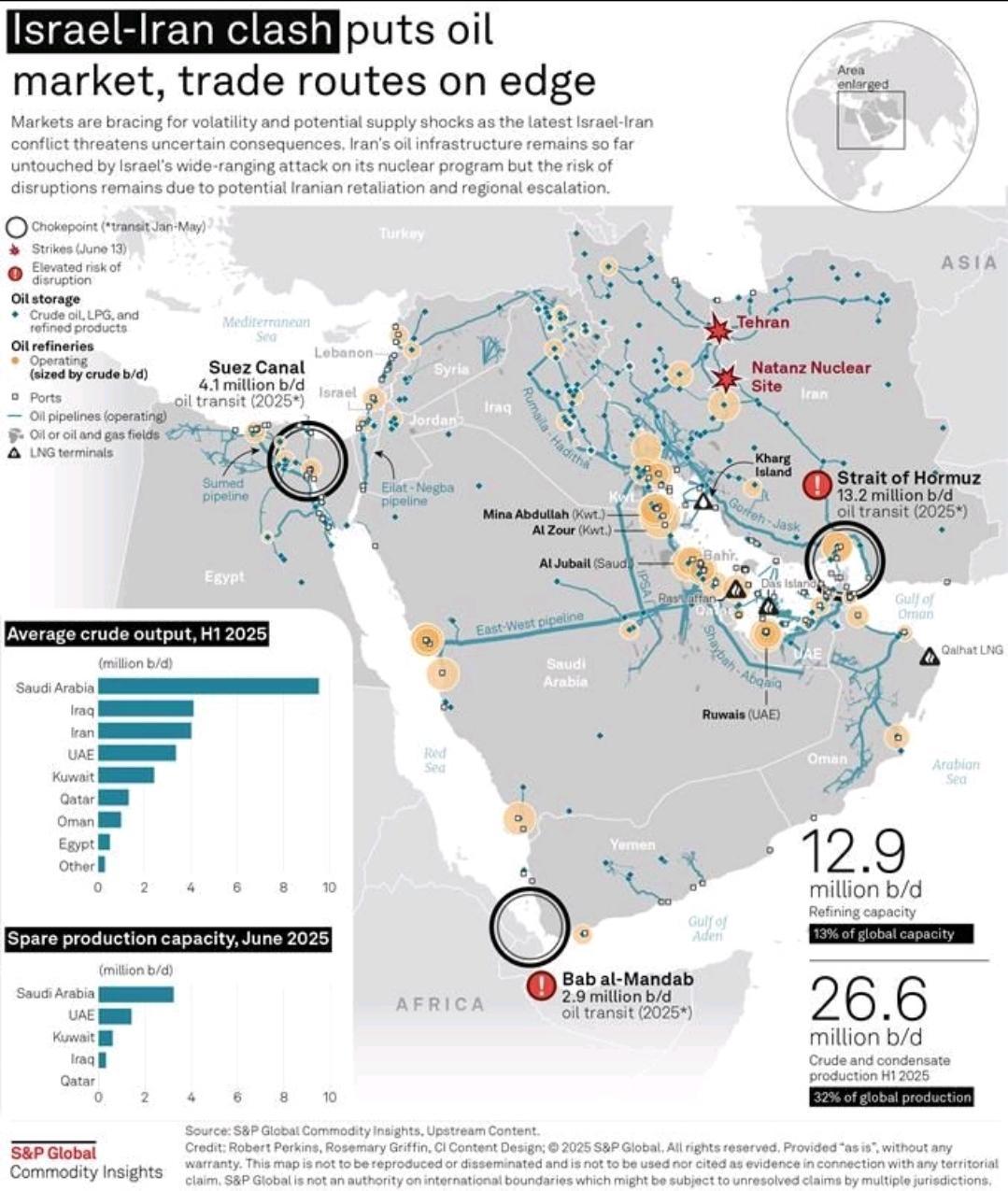Geopolitical developments in the Middle East continue to dominate global market sentiment. Over the weekend, the United States, under President Donald Trump, conducted targeted strikes on Iran’s nuclear facilities. These strikes were described by the U.S. administration as “Operation Midnight Hammer”. US President Trump warned that “many targets remain,” emphasising that the US had no desire for regime change but threatened larger future strikes if Iran failed to engage diplomatically. Officials have indicated that any retaliatory action from Iran will prompt further precision strikes on strategic targets. Iran has replied that the US has closed all doors for diplomacy by conducting these strikes.
From a market perspective, analysts broadly agree that Iran’s immediate retaliatory capabilities are limited to actions involving Israel and Syria. Notably, all Gulf Cooperation Council (GCC) states have condemned the U.S. strikes, and the U.S. avoided utilizing any GCC-based military assets for the operation. This regional positioning underscores Iran’s constrained strategic flexibility and the GCC’s clear stance on the matter.
In a significant development, Iran’s parliament (Majlis) voted to block the Strait of Hormuz over the weekend. However, from both logistical and economic standpoints, such a move would primarily harm Iranian and allied interests. Potential asymmetric measures, such as jamming navigation signals, have already been reported and remain a concern for maritime security.
The U.S. strikes targeted Iran’s nuclear sites at Isfahan, Natanz, and Fordow using B52 bombers equipped with GBU-57 “bunker buster” munitions, alongside approximately 30 Tomahawk missiles launched from the U.S. submarine. The operation was coordinated with Israel, which remains engaged in reciprocal attacks with Iran, marking an ongoing regional escalation.
Market Reactions
In immediate response, U.S. equity index futures opened with a slight gap down, but recovered in overnight trading. initially gapped higher before retracing those gains, signaling a nuanced market interpretation of the events.
Market volatility is expected to remain elevated in the near term as traders assess the probability of a prolonged conflict or further escalation. At this stage, the absence of ground troop deployment from either side suggests the conflict may remain limited to aerial and cyber operations. Consequently, risk premiums in energy markets have increased, while equity markets remain sensitive to headline risks.
Importantly, the U.S. has reiterated its position that it is not pursuing a ground invasion of Iran and has framed the strikes as a limited mission aimed at nuclear infrastructure. Investors had the opportunity to process this stance over the weekend, helping to contain broader market fallout.
Ongoing diplomatic efforts such as de-escalation talks involving the EU had been reported prior to the strikes. In addition, there were talks held Turkiye hosting OIC countries. Observers noted that the final indicators of imminent action emerged when B-52 bombers departed U.S. bases and naval activity surged in the Mediterranean and Arabian Seas.
Energy Market Considerations
To date, there has been no major disruption to global oil or gas markets. However, the geopolitical risk premium remains a key variable. Iran’s foreign minister is currently engaging with Russian and Chinese counterparts, with Russia’s Deputy Security Council Chair Dmitry Medvedev issuing a provocative statement suggesting potential assistance for Iran in developing nuclear capabilities, including nuclear warheads.
At present, Israel is the only nuclear-armed state in the Middle East. Should Iran pursue nuclear armament, it could trigger an arms race in the region, potentially involving Saudi Arabia and Turkey, and significantly destabilize regional security dynamics. Preventing this scenario through diplomacy is critical to maintaining long-term energy and geopolitical stability.

Strategic Significance of the Strait of Hormuz

The Strait of Hormuz remains a vital artery for global oil flows, with approximately 32% of the world’s crude production and 13% of global refining capacity transiting the route. The strait’s geography is also a key consideration: commercial vessels typically transit via Omani waters due to shallow waters on the Iranian side.
Maps provided by S&P Global and other analysts underscore the vulnerability of regional infrastructure and shipping routes amid escalating hostilities. It is worth noting that upstream Iranian oil facilities are located along the country’s western border, adding complexity to any potential conflict scenarios.
GCC nations—including Oman, Saudi Arabia, the UAE, and Qatar—have issued statements condemning the U.S. strikes, emphasizing Iran’s compliance with the Non-Proliferation Treaty (NPT) and its cooperation with the International Atomic Energy Agency (IAEA). This regional consensus highlights the broader international desire to avoid further escalation and underscores why Iran’s response thus far has remained measured.
Conclusion
While the immediate impact on global markets has been contained, the situation remains fluid. Elevated volatility, particularly in energy markets, reflects the geopolitical uncertainty. The focus now shifts to diplomatic channels and the broader regional and international response, which will be pivotal in shaping the trajectory of market risk sentiment in the coming weeks.
